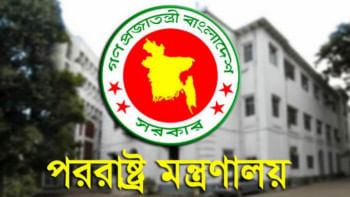Fighting religious terrorism in Bangladesh

Terrorism has been now labeled as the systematic internal or external violence and intimidation practiced by organised terrorists. However the last decade witnessed a transformation of the definition and patterns of terrorism, both domestically and internationally. Defining terrorism refers to any political act designed by groups to have their message heard. It means and includes unlawful act of violence which intimidates government or societies and its goal is to achieve political or ideological objective. In line with the above definition, religious terrorism can be defined as terrorism carried out based on the objectives and goals that have a predominantly religious influence.
Considering the concepts of four waves of terrorism given by David Rapoport in 2002 it is found that the fourth wave which is called “religious wave” began in 1979 the year of Islamic revolution in Iran. The wave continues with some international political happenings like Afghanistan war with Russia, Middle East crisis, Kashmir crisis, Iraq invasion by US and lastly Syria crisis. To further analysis, it can be collaborated with sociological propositions established by Boyns and Ballard (2004) which indicates that a sociological foundation can be held responsible where terrorism can easily be transplanted.
The first proposition is counter-hegemony which refers to response towards a potentially hypothetical powerlessness. The terrorist groups are demanding to change the hegemonic order of the social and political order which clearly indicates their dissatisfaction and powerlessness. Secondly, the resource mobilisation proposition asserts that due to the globalisation and democratisation of educational and technological resources, such resources will become more available to terrorist groups. As example we see that those groups are using latest communication technologies and they have the access to resource helping them to strike hard. Thirdly the power-prestige proposition describes that the more severe and more publicly visible the terrorist attack, the more attention they gain within their own network. For example, we see that the attackers are uploading pictures of victims in internet to show the world about their superior position which matches this proposition.
And lastly the solidarity proposition indicates, 'the more successful or visible a terrorist attack, the greater the internal solidarity of both hegemonic (the victimised by the attack) and counter-hegemonic (those responsible for the attack) groups will be strengthened'. This proposition becomes understandable when we find that people from all parts of the world are joining terrorist groups as they feel the same religious solidarity.
Matching those propositions it can be said that in Bangladesh these factors were responsible for such terrorist attacks. Socio- economic deprivation, political and institutional order, divided education system and values, failure of social-control mechanism, identity and cultural clash, global economic and political order, deviated religious leaders and agents, availability of finance and technological support can be held responsible for such rise of terrorist activities.
Response to those, the government of Bangladesh has enacted the Anti-terrorism Act 2009 to combat terrorism that covers terrorism including religious extremism. Section 6 holds that any person, entity or foreigner may be punished with death or imprisonment for life and in addition to that a fine may also be imposed if he commits offence for the purposes of threatening the unity, integration, public security or sovereignty of Bangladesh. Simultaneously the accused shall be punished with imprisonment for life or a rigorous imprisonment not exceeding fourteen years but not less than four years, and additionally fine if he abets or instigates any person to murder, injure seriously, confine or kidnap any person, or abets or instigates to damage any property of any person or entity or the State.
Moreover, if any person is found guilty of financing terrorists, the person shall be punished with an imprisonment for a term not exceeding twenty years but not less than four years, and a fine may be imposed equal to twice the value of the property involved with the offence or taka ten lakh.
So along with legal interventions, social interventions can be focused on changing the underlying social conditions of children and youth of 'at risk' families. Moreover in the schools children must learn the religious scriptures with proper meaning and may provide proper knowledge on religious. Community and criminal justice interventions must be strengthened by effective monitoring system.
The writer is a Lecturer of Law, Bangladesh Open University.


 For all latest news, follow The Daily Star's Google News channel.
For all latest news, follow The Daily Star's Google News channel. 



Comments